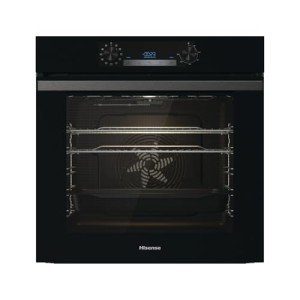Who Is The World's Top Expert On Built In Electric Oven?
페이지 정보

본문
The Comprehensive Guide to Built-in Electric Ovens and Hobs
In today's hectic world, modern-day kitchen appliances have evolved dramatically to cater to the tastes and requirements of modern homeowners. Amongst these appliances, built-in electric ovens and hobs stick out for their efficiency, design, and functionality. This article checks out the features, benefits, setup ideas, and upkeep of built-in electric ovens and hobs, alongside attending to often asked concerns.
Comprehending Built-in Electric Ovens
What Is a Built-in Electric Oven?
A built-in electric oven is a home appliance created to be set up into a wall or kitchen cabinets, supplying a smooth, integrated ovens look in the kitchen. Unlike freestanding ovens, built-in models conserve area and built-in electric ovens frequently come geared up with extra features such as self-cleaning cycles, convection cooking, and various cooking modes.
Types of Built-in Electric Ovens
- Single Ovens: Ideal for smaller kitchens or those who prepare for fewer individuals.
- Double Ovens: Offer more cooking area, ideal for larger families or those who captivate regularly.
- Mix Ovens: These include both a standard oven and a microwave, providing versatile cooking choices.
Advantages of Built-in Electric Ovens
| Benefit | Description |
|---|---|
| Space-Saving Design | Fits seamlessly into cabinetry, releasing up counter space. |
| Improved Aesthetics | Develops a modern-day, expert kitchen appearance. |
| Versatile Cooking Options | Frequently features several cooking modes including bake, broil, and convection. |
| Energy Efficient | Consumes less energy than standard ovens. |
Understanding Built-in Hobs
What Is a Built-in Hob?
A built-in hob is a cooking surface installed into the kitchen counter top, incorporating perfectly with the kitchen design. Readily available in electric, induction, and gas varieties, electric hobs are renowned for their precision and ease of use.
Types of Built-in Hobs
- Electric Hobs: Traditional coil components that heat by means of electrical resistance.
- Induction Hobs: Use magnetic energy to heat only the cookware, making them quicker and safer.
- Ceramic Hobs: Feature a smooth surface with convected heat beneath, using easy cleansing.
Advantages of Built-in Hobs
| Advantage | Description |
|---|---|
| Fast Cooking Times | Electric hobs heat quickly, lowering general cooking time. |
| Easy to Clean | Flat surface area permits fast and uncomplicated cleaning. |
| Long lasting | Typically built to last and stand up to high temperatures. |
| Versatile Compatibility | Functions well with various pots and pans materials. |
Installation Considerations
Setting up a built-in electric oven and hob needs cautious preparation.
Steps for Installation
- Procedure the Space: Ensure the dimensions of the oven and hob match the designated area in your kitchen.
- Check Electrical Requirements: Consult an electrician to guarantee circuitry can handle the device's power requirements.
- Positioning of Appliances: Position the oven at a hassle-free height, usually between waist and eye level.
- Ventilation: Ensure appropriate ventilation, specifically if your oven incorporates a range hood.
Important Tools
- Power drill
- Screwdrivers
- Level
- Measuring tape
Safety Precautions
- Constantly disconnect the power before installation.
- Follow maker instructions carefully.
- Consider hiring an expert for electrical connections.
Upkeep Tips
Preserving built-in electric ovens and hobs is crucial for longevity and performance.
Routine Care Routine
- Cleaning the Surface: Use a soft cloth and manufacturer-recommended cleaner.
- Checking Electrical Connections: Check cords and plug for damages occasionally.
- Cleaning up Filters: If the intergrated oven has a ventilator, tidy or change the filters as required.
Troubleshooting Common Issues
| Problem | Possible Solution |
|---|---|
| Oven Won't Heat | Check the power supply and heating component. |
| Heating Inconsistency | Inspect the thermostat and oven calibration. |
| Hob Not Heating | Ensure cookware works and inspect the power supply. |
Often Asked Questions
1. How do I select the right size built-in electric oven?
Choosing the ideal size includes determining your kitchen area and thinking about just how much cooking you generally do. If you amuse frequently or have a large household, select a double oven.

2. Are built-in electric hobs safe to utilize?
Yes, built-in electric hobs are safe, particularly induction hobs which just heat the pots and pans, lowering the danger of burns.
3. Can I install a built-in oven and hob myself?
While it is possible for knowledgeable DIY enthusiasts, employing a professional is recommended, especially for the electrical connections.
4. How frequently should I clean my built-in oven and hob?
Cleaning should be done routinely after use, with deep cleansing periods depending upon cooking frequency - normally every couple of months.
5. Do built-in appliances require unique maintenance?
Built-in appliances need similar maintenance to freestanding models, but proper care must be taken with their surrounding cabinets.
Built-in electric ovens and hobs present a blend of innovation and style, offering efficiency and contemporary looks to any kitchen. With proper selection, mindful installation, and regular maintenance, these appliances can enhance one's cooking experience for several years. Comprehending the features, benefits, and care requirements can empower house owners to create the kitchen of their dreams-- effectively and stylishly.
As kitchen areas continue to develop into main centers of the home, selecting the ideal built-in services plays a vital function in everyday culinary imagination and satisfaction.
- 이전글The Three Greatest Moments In Built In Oven And Microwave History 25.05.20
- 다음글What's The Current Job Market For Cheap Dual Fuel Range Cookers Professionals? 25.05.20
댓글목록
등록된 댓글이 없습니다.



